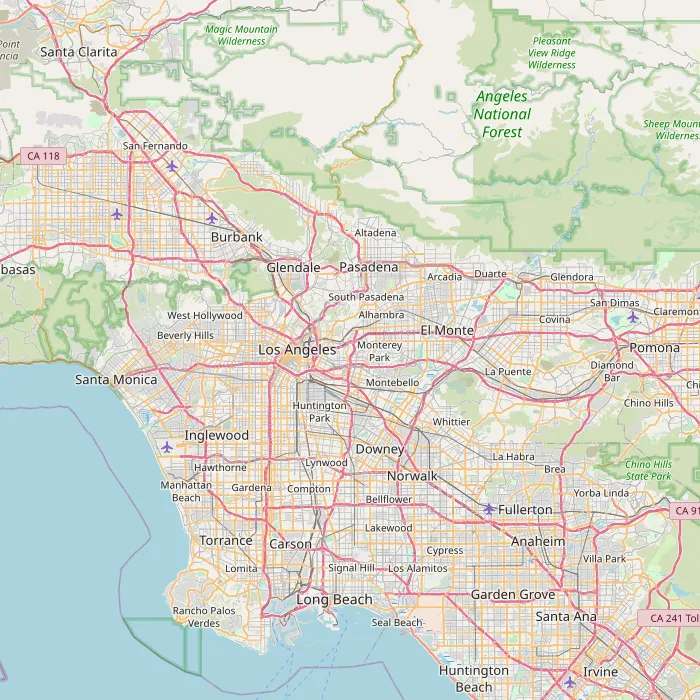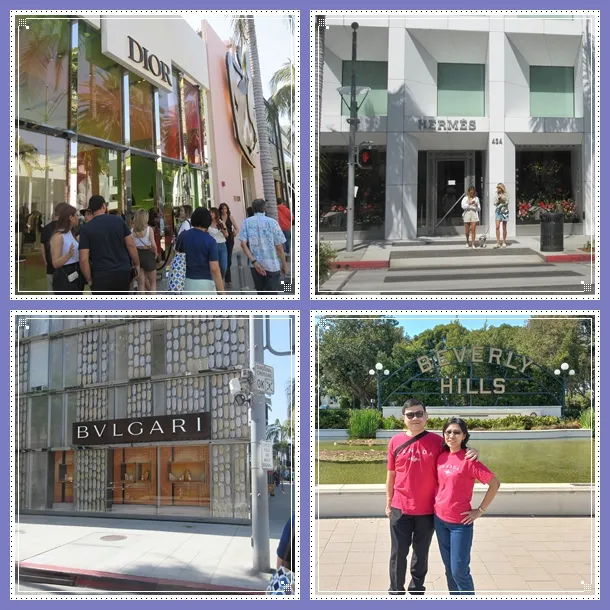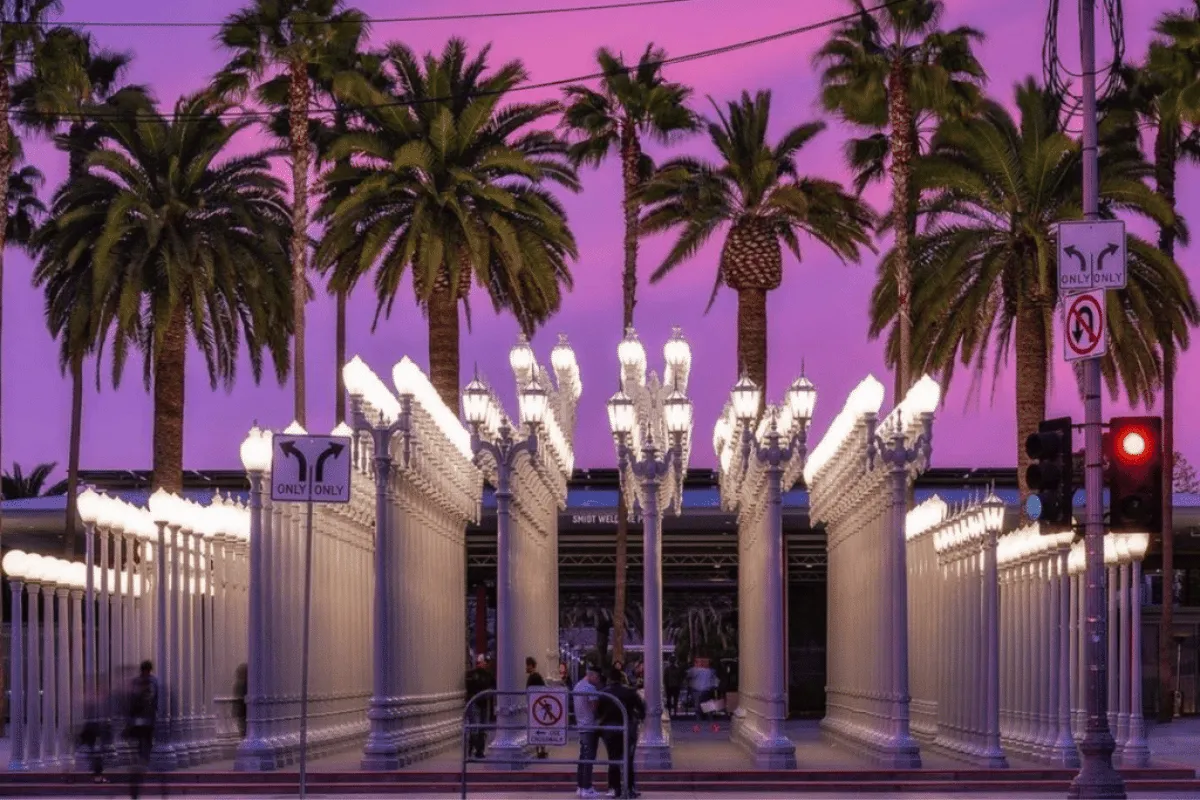Los Angeles, the city of stars and endless sunshine, often boasts a reputation for near-perfect weather. But what exactly defines the climate Los Angeles? As a content creator passionate about travel and culture, I believe understanding the local weather patterns is key to truly experiencing a destination. Los Angeles offers a classic Mediterranean climate, characterized by mild, wet winters and hot, dry summers. This distinct pattern significantly shapes the lifestyle, activities, and even the unique vibe of this sprawling Southern California metropolis. Getting acquainted with its climate nuances ensures you pack right, plan optimally, and make the most of your visit, whether you’re chasing waves, exploring museums, or savoring diverse cuisines.
The Signature Climate Los Angeles: Mediterranean Magic
The foundation of the climate Los Angeles is its classification as a Mediterranean climate (Csb in the Köppen system). This type of climate is relatively rare globally, typically found on the west coasts of continents between 30° and 45° latitude. It’s defined by predictable seasonal shifts: a rainy season during the cooler months and a nearly completely dry season during the warmer months. This characteristic is what allows Southern California to support both chaparral ecosystems and vast urban development, heavily reliant on imported water.
What Makes the Climate Los Angeles Unique?
While broadly Mediterranean, the climate Los Angeles exhibits significant microclimate variations due to its topography. The city stretches from the coast, across flat basins, and into mountain ranges. Coastal areas tend to be milder year-round with less temperature fluctuation and more morning fog or marine layer influence, especially in late spring and early summer. Inland valleys and the San Gabriel Valley, however, experience much hotter summers and cooler winters, often with significant daily temperature swings. This geographical diversity means that while it might be a cool 65°F (18°C) at Santa Monica Beach, it could be a scorching 95°F (35°C) in Woodland Hills on the same afternoon.
What to Eat in Fort Worth – A Culinary Deep Dive
Discover the Top Restaurants in Denver – A Culinary Journey
Discover Where to Visit in Las Vegas
 Map showing data sources for Los Angeles climate analysis
Map showing data sources for Los Angeles climate analysis
Seasonal Breakdown: Planning Your Trip Around the Climate Los Angeles
Understanding the seasons is crucial for planning your trip to Los Angeles. Each period offers a different flavor of the climate Los Angeles, impacting crowds, activities, and the necessary wardrobe.
Spring (March-May): Pleasant Warmth
Spring is typically a delightful time in Los Angeles. Winter rains subside, and temperatures begin to climb into the comfortable 70s°F (low 20s°C). Wildflowers can bloom in the surrounding hills. This season offers a great balance for sightseeing, hiking, and enjoying outdoor patios before the peak summer heat arrives. It’s less crowded than summer, making attractions more accessible.
Summer (June-August): Sunshine and Coastal Breeze vs. Inland Heat
Summer is synonymous with sunshine in LA. Rainfall is virtually nonexistent. Coastal areas benefit from the “marine layer,” a cool, moist air mass that often brings morning fog or low clouds (“June Gloom,” “July Gloom”) before burning off to reveal sunny afternoons. Temperatures here typically stay in the 70s°F (low 20s°C). However, inland areas can regularly reach 90°F (32°C) and often exceed 100°F (38°C), sometimes for prolonged periods during heatwaves. This is peak tourist season, especially for beaches and theme parks.

Fall (September-November): Often the Best Time
Many locals will tell you that fall is the best time to experience the climate Los Angeles. The oppressive inland heat of summer often breaks, temperatures are warm but pleasant across the region, and the marine layer is less frequent than in late spring/early summer. Average highs are still in the high 70s or low 80s°F (mid-to-high 20s°C). The ocean is at its warmest. This season can also bring the Santa Ana winds, hot, dry winds blowing from the desert that significantly increase fire risk but also clear the air for stunningly clear days.
Winter (December-February): Mild & Wet?
Winter in Los Angeles is a stark contrast to much of North America. While cooler, average daytime temperatures remain mild, often in the low to mid-60s°F (mid-to-high teens °C). This is the rainy season, though rain typically comes in short, intense bursts rather than prolonged drizzle. Some days can be grey and wet, while others are crisp, clear, and sunny. Snow is extremely rare in the city basin itself but common in the nearby mountains, allowing for unique day trips combining city exploration with snow activities. It’s a quieter season for tourism, offering a more local feel.
Beyond Temperature: Other Factors Influencing the Climate Los Angeles
While temperature and precipitation define the seasons, other climatic factors play a significant role in the daily experience of the climate Los Angeles.
Precipitation Patterns
Los Angeles receives an average of only about 15 inches (380 mm) of rain annually, mostly concentrated between December and March. The rest of the year is exceptionally dry. This lack of rain, coupled with the hot, dry summers, makes water conservation a crucial aspect of life in the city and contributes to wildfire risk, especially in the surrounding wildland-urban interface. Droughts are a recurring concern.
Coastal Influence: Fog and Marine Layer
The interaction between the cool Pacific Ocean and the warmer land mass creates the marine layer. This phenomenon is most common in late spring and early summer, bringing clouds and cooler temperatures, particularly to coastal communities. While it can sometimes persist all day, it often burns off by midday, revealing the sun. This provides a natural air conditioning for beach areas but can frustrate sun-seekers in the morning.
Wind Patterns: Santa Ana Winds
These infamous winds are a dramatic feature of the climate Los Angeles, typically occurring in the fall and winter. They are hot, dry winds that blow from the desert inland areas towards the coast, caused by high pressure over the Great Basin and low pressure off the coast. They can cause temperatures to soar unexpectedly, reduce humidity to dangerously low levels, and increase wildfire spread rapidly. They are often associated with clear, intensely blue skies but also significant discomfort and hazard.

Sunshine Hours
Despite the occasional marine layer, Los Angeles is incredibly sunny. It consistently ranks among the sunniest major cities in the United States. This abundance of sunshine is a major draw for residents and tourists alike, enabling year-round outdoor activities, from beach days to hiking. It contributes to the city’s vibrant outdoor culture and the feeling of perpetual summer.
How the Climate Los Angeles Impacts Travel & Experience
The appealing climate Los Angeles is arguably its biggest draw. It dictates everything from what people wear to where they spend their time.
Activities for Every Season
Thanks to the generally mild conditions, Los Angeles offers year-round opportunities for exploration. Summers are perfect for beach days, surfing, and swimming. Spring and Fall are ideal for hiking in the Santa Monica Mountains or Griffith Park. Winters, even with potential rain, are suitable for visiting museums, exploring diverse neighborhoods, and enjoying indoor attractions. The consistency of the climate means few activities are truly off-limits for extended periods.
Packing Essentials Based on the Climate Los Angeles
Given the variability between coastal and inland areas, and the cool evenings even after warm days, layering is key when visiting Los Angeles. Lightweight clothing for warmth, swimwear for the beach, comfortable shoes for walking, and a jacket or sweater for evenings are essential. Sun protection – sunscreen, hats, sunglasses – is crucial year-round due to the intense California sun. An umbrella is only truly needed during the winter months.
Dealing with Heat & Sun
Especially during summer and periods of Santa Ana winds, managing heat and sun exposure is important. Stay hydrated, seek shade during the hottest parts of the day (typically late afternoon), and always wear sunscreen. Inland temperatures can be significantly higher than coastal ones, so factor this into activity planning.
The Future of Climate Los Angeles: Trends and Considerations
Like many parts of the world, the climate Los Angeles is experiencing changes. Trends indicate increasing frequency and intensity of heat waves, prolonged periods of drought, and a heightened risk of devastating wildfires. While the core Mediterranean pattern is likely to persist, these extreme events will become more common, posing challenges for water management, public health, and environmental stability. Awareness of these trends is important for understanding the long-term picture of LA’s climate.
Frequently Asked Questions About the Climate Los Angeles
What is the best time of year to visit Los Angeles based on climate?
For many, late spring (April-May) or fall (September-October) offer the most pleasant temperatures and fewer crowds, minimizing the effects of the marine layer and peak summer heat. However, if you love hot weather and the classic beach vacation vibe, summer is ideal.
Does Los Angeles ever get cold or snow?
Temperatures rarely drop below freezing in the coastal or basin areas of Los Angeles. While it can feel chilly on winter nights (sometimes dipping into the 40s°F/single digits °C), snow is extremely uncommon within the city itself. Snowfall occurs regularly in the surrounding mountains (like the San Gabriel Mountains) in winter.
Is Los Angeles climate humid?
Compared to the eastern United States, Los Angeles typically has low humidity, especially inland. Coastal areas experience higher humidity due to the marine layer, but it’s generally not considered an overly humid climate, contributing to why hot temperatures can feel dry rather than sticky.
What is “June Gloom”?
“June Gloom” is a colloquial term referring to the phenomenon in late spring and early summer where the marine layer brings morning fog or low clouds to coastal and basin areas of Southern California, including Los Angeles. The clouds often burn off by the afternoon, but sometimes they can persist all day. It’s a natural part of the climate Los Angeles.
Conclusion
Exploring the climate Los Angeles reveals a fascinating blend of predictable seasonal shifts and nuanced microclimates. It’s a climate that is undeniably a major part of the city’s identity, enabling an active, outdoor lifestyle and shaping the rhythm of daily life. From the misty mornings near the Pacific to the dry heat of the valleys, understanding these weather patterns enhances your appreciation for Los Angeles and allows you to navigate the city like a seasoned traveler. Whether you’re basking in autumn warmth or experiencing a rare winter rain shower, the climate here adds another layer to the rich tapestry of the Los Angeles experience.
